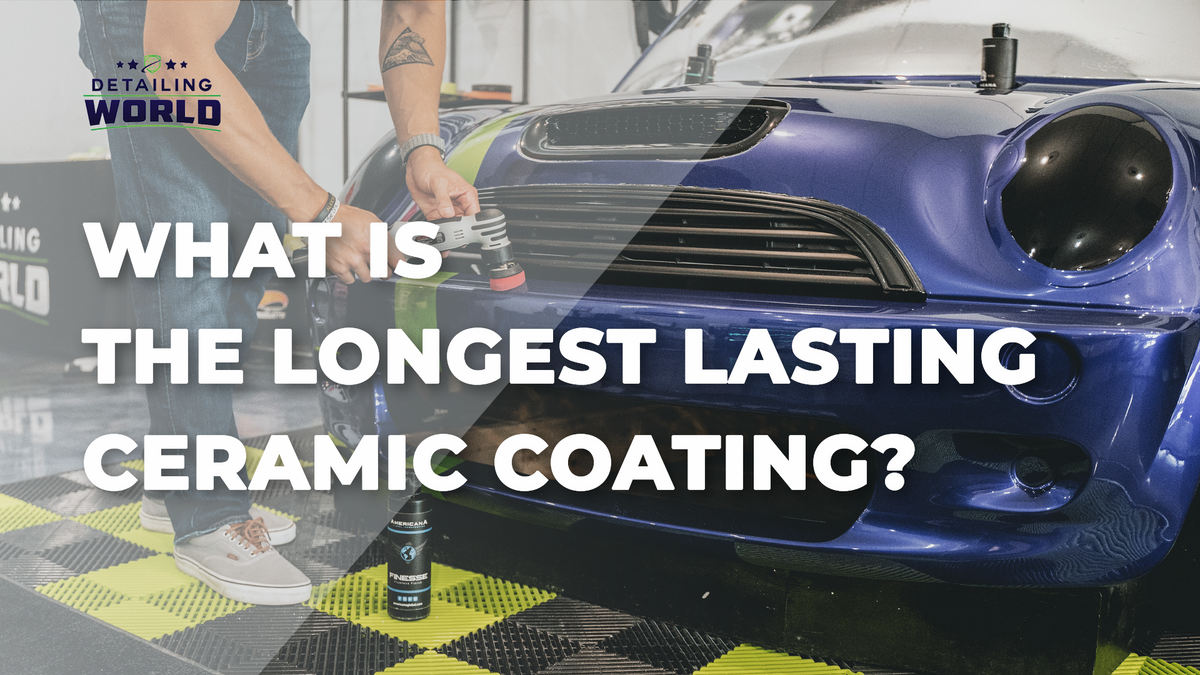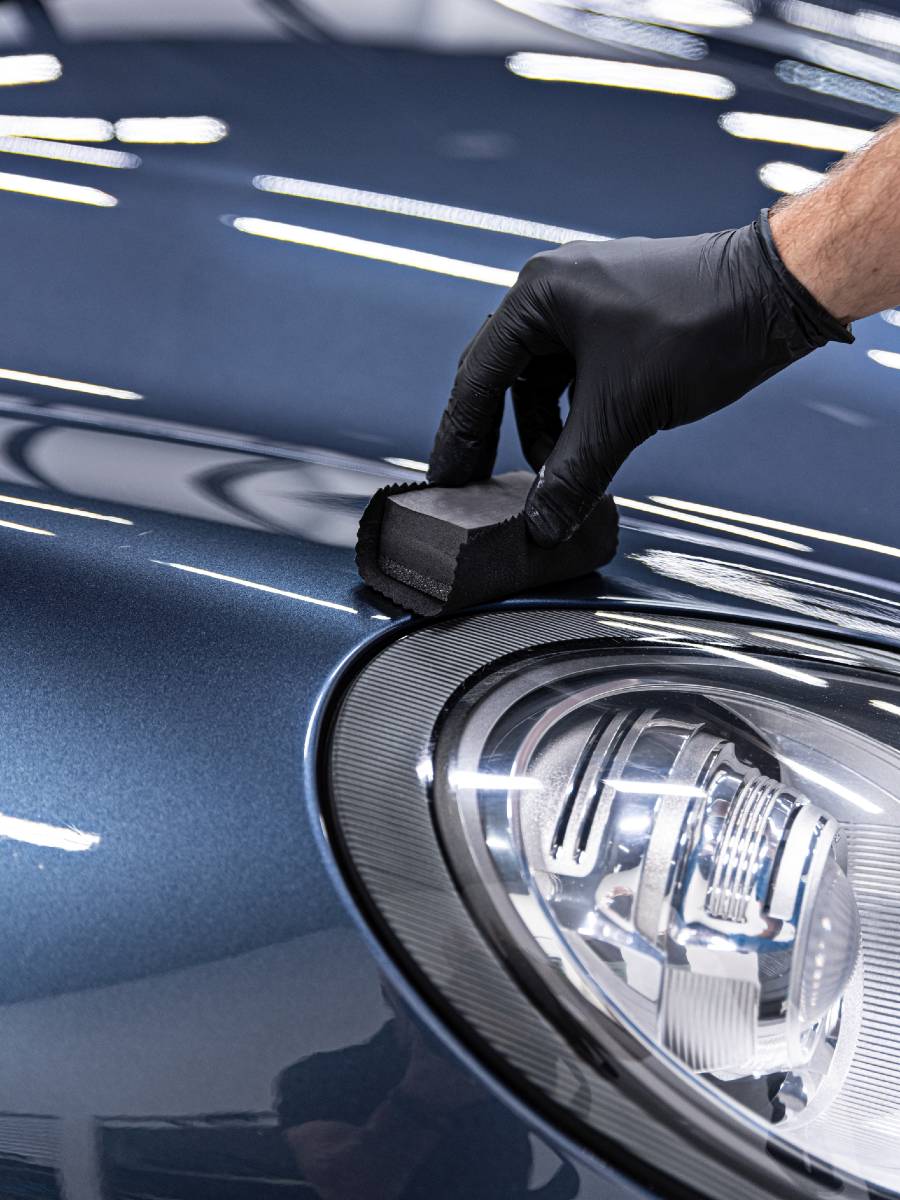Ceramic Finishing vs. Traditional Wax: Which Provides Much Better Long-Term Defense?
The argument in between ceramic layers and standard wax for lorry security has actually garnered significant attention among vehicle fanatics and experts alike. Ceramic coverings boast superior durability and resistance to ecological factors, yet the complexity of their application increases inquiries regarding ease of access and practicality.
Introduction of Ceramic Finish
Ceramic covering has actually obtained substantial appeal amongst automotive enthusiasts and detailers alike as a result of its advanced protective qualities. This cutting-edge technology is created to produce a sturdy, hydrophobic guard over a vehicle's paint surface area, significantly improving its resistance to environmental impurities such as dust, UV rays, and chemical discolorations. Unlike typical wax, which supplies a short-term layer of security, ceramic finishings bond at a molecular level with the paint, using lasting toughness-- often prolonging beyond 2 years with correct maintenance.
The application procedure entails precise prep work of the lorry's surface, including cleaning and brightening to guarantee ideal attachment. Once applied, the coating cures to create a durable layer that not only adds deepness and gloss to the paint however additionally streamlines upkeep. With its hydrophobic buildings, ceramic covering permits water and dust to move off more conveniently, reducing the frequency of cleans and lessening the threat of swirl marks.
In addition, ceramic finishes are readily available in different formulas, permitting users to pick items customized to their specific demands and preferences. Overall, ceramic finishing stands for a considerable improvement in paint protection modern technology, providing remarkable performance contrasted to traditional alternatives.
Overview of Conventional Wax
Typically considered a staple in auto treatment, wax acts as a popular choice for those seeking an uncomplicated approach to enhance and safeguard their vehicle's paint - ceramic coating. Automotive wax typically makes up all-natural ingredients, such as carnauba, or artificial compounds, created to create a safety layer externally of the paint. This layer not just enhances the lorry's gloss and radiate but additionally gives an obstacle versus ecological contaminants
The application of wax is generally easy to use, making it obtainable for both specialists and DIY fanatics. When applied, wax requires a treating period, after which it hardens to create a safety covering.
Nevertheless, while wax is effective for improving the visual appeal of a lorry, it is necessary to note that the security it supplies might necessitate much more frequent reapplication compared to alternative products, such as ceramic coverings. Overall, standard wax remains a preferred option for those prioritizing simplicity of use and prompt aesthetic renovation.
Resilience and Long Life Comparison
While both ceramic finishings and conventional wax deal protective advantages for automobile paint, their toughness and durability differ considerably. Traditional wax, generally made from all-natural carnauba or synthetic polymers, generally supplies a safety layer that lasts roughly 3 to 6 months. This reasonably short lifespan demands routine reapplication to maintain optimal defense.
In comparison, ceramic layers are engineered from advanced nanotechnology, forming a covalent bond with the paint surface. This leads to a durable, hydrophobic layer that can sustain for two to 5 years, relying on the item and ecological conditions. The superior resilience of ceramic coverings is credited to their chemical framework, which uses improved resistance to scrapes, UV rays, and oxidation.

Defense Against Environmental Factors
Shielding a vehicle's paint from ecological aspects is important for keeping its look and value over time. Vehicles are continuously subjected to a range of aspects, including visit this web-site UV rays, bird droppings, tree sap, acid rain, and road grime, all of which can jeopardize the integrity of the paintwork.
Ceramic layers give a over here durable protection versus these environmental assailants. Unlike conventional wax, which can weaken promptly under UV exposure, ceramic coverings create a resilient, hydrophobic layer that withstands the harmful impacts of sunshine and ecological pollutants. This advanced technology develops a chemical bond with the vehicle's surface, providing premium defense that lasts for several years, also in severe conditions.
In contrast, ceramic layers preserve their protective high qualities much longer, significantly lowering the danger of paint damages and making certain that the vehicle maintains its aesthetic allure. As an outcome, ceramic coverings are progressively acknowledged as the remarkable selection for lasting defense versus ecological aspects.
Application and Maintenance Differences
The approaches of application and succeeding upkeep for ceramic finishings and typical wax differ dramatically, affecting the general customer experience and efficiency of each product. Ceramic finishings require an even more complex application process, usually involving surface area prep work that includes cleaning, decontaminating, and brightening the automobile. Once the surface is ready, the ceramic layer is used in a controlled environment, usually requiring professional competence to make certain correct healing and bonding to the paint.

While both items improve car appearance, the longer-lasting defense used by ceramic finishings may validate their preliminary investment, despite the even more requiring application procedure. On the other hand, typical wax stays a prominent selection for those seeking an easier, albeit temporary, remedy.

Verdict
To conclude, ceramic coverings show substantial benefits over standard wax in terms of resilience and environmental management. With a life-span extending two to 5 years and exceptional resistance to UV rays, dust, and chemical stains, ceramic coatings offer a more reliable option for lasting car upkeep. The application procedure may require professional competence, the resulting expense financial savings and decreased frequency of reapplication underscore the value of ceramic coverings for those looking for ideal car protection.
The debate between ceramic layers and conventional wax for vehicle defense has actually amassed substantial attention among vehicle lovers and specialists alike. Unlike traditional wax, which offers a Read Full Report short-term layer of protection, ceramic coatings bond at a molecular level with the paint, offering lasting durability-- often extending beyond two years with appropriate upkeep.
While both ceramic finishes and conventional wax deal protective advantages for automotive paint, their longevity and durability differ considerably. For automobile lovers looking for long-term protection, ceramic finishings present an engaging advantage over standard wax products.
In verdict, ceramic coverings demonstrate substantial advantages over standard wax in terms of resilience and ecological defense.